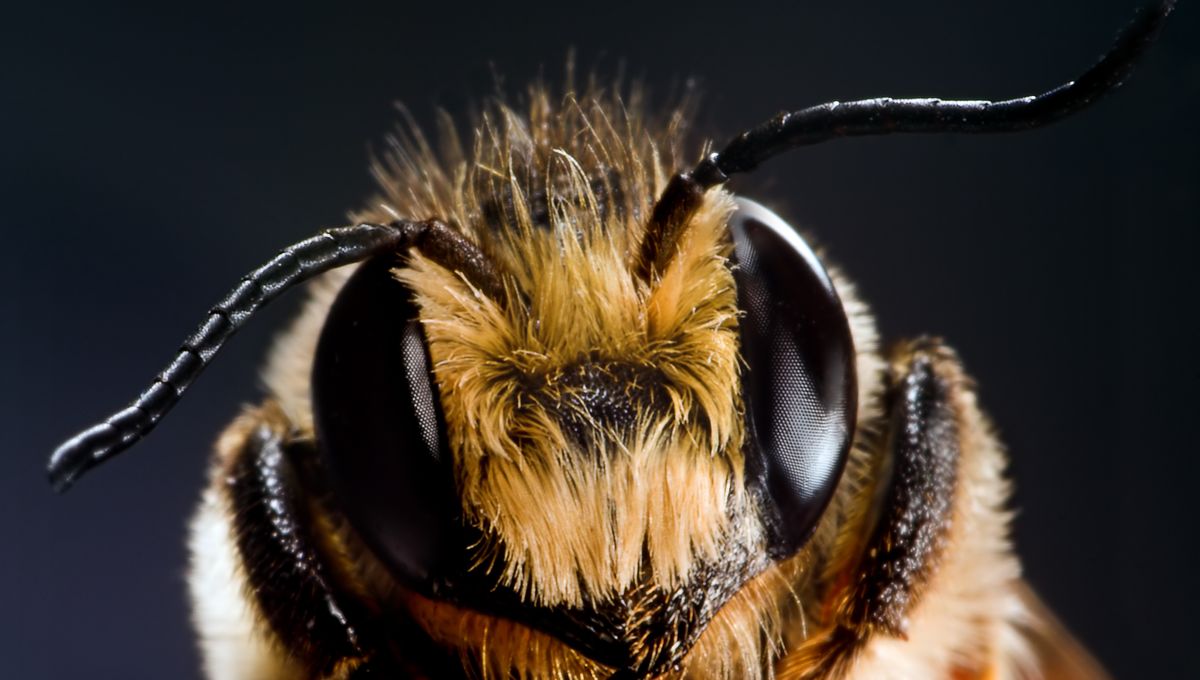
Some animals have a “third eye”, and some spiders have as many as eight, but what about bees? A quick glance might lead you to answer “two”, and two pretty massive ones at that, but first impressions can be deceiving.
How many eyes do bees have?
Bees actually have five eyes: two compound eyes and three simple eyes, called ocelli.
The two compound eyes are those huge brown-black ovals that seem to take up most of their tiny heads, and they help bees detect movement and color.
They’re made up of thousands of tiny light-sensitive units called ommatidia; each one can act as a separate eye, overlayed by a cone and a lens that help to focus light onto the photoreceptor cells – specialized cells that transduce light into signals sent to the brain – within each unit.
The ocelli, on the other hand, are much smaller, and can be found on the top of a bee’s head in the center, laid out in a triangle. While they’re called simple eyes, that’s only relative to the complexity of a compound eye; honeybee ocelli, for example, still have around 800 retinal cells each.
Unlike compound eyes, it’s thought that they don’t have a role in detecting spatial detail. Instead, ocelli act as a super sensitive light detector, which helps them use the Sun to orient themselves.
What do bees see?
Bees see the world – and flowers in particular – in a much different way to humans. Whilst we can only see light with wavelengths between 380 to 700 nanometers (known as the visible light spectrum – well, visible to humans, at least), bees see a portion of the electromagnetic spectrum ranging from 300 to 650 nanometers.
The downside is that means they can’t see red – the classic London bus must look pretty boring to them. On the upside, they can see ultraviolet (UV); it’s thought that flowers have evolved to have petals with UV patterning in order to be more attractive to bees, who are important pollinators.
Do honeybees have hairy eyes?
Look closely at the compound eyes of a honeybee and you’ll notice that they’re covered in hairs. Having hair on your eyes might sound like something from a horror movie to humans – or at the very least, incredibly annoying – but for honeybees, these tiny strands are super helpful.
The purpose of these hairs relates to the role of honeybees as pollinators; the strands allow the bee to pick up more pollen, and they’re carefully spaced so that the pollen stays at the very tip. This means that the bees can give their eyes a swipe with their hairy legs and easily remove the pollen, clearing up their vision.
Source Link: How Many Eyes Do Bees Have?